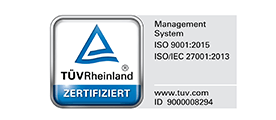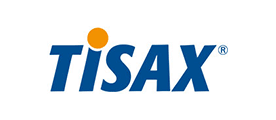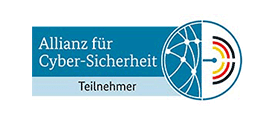Enterprise Architecture Management
Enterprise Architecture Management (EAM) is a strategic management discipline that deals with the planning, development, documentation and continuous evolution of a company’s entire structure and organization. The main objective of EAM is to create a coherent and effective enterprise architecture that supports the business strategy and business processes and enables digital transformation. It enables companies to understand the current state of their IT landscape and master future challenges. EAM looks at the company as a whole and integrates various dimensions, including business processes, data, applications and technologies. By systematically organizing and optimizing these elements, architecture management strives to optimize resources, minimize risks, promote innovation and improve the agility of the company – always taking into account current and future business requirements. By building and maintaining a comprehensive enterprise architecture, EAM creates a foundation for aligning business and IT strategies, fosters collaboration between different business units and ensures that technology investments deliver the desired value to the organization.
We help you to keep an overview
Traditional enterprise architecture management was characterized by long-term objectives, realistic planning and concrete implementation steps. In today’s world, this is no longer enough for a successful digital transformation. The challenge is to merge enterprise architecture management (EAM) and agility in order to meet the requirements of new competitors, business models and innovative technologies in the IT landscape. Products and services are taking center stage. Enterprise Architecture Management (EAM) is more than just a technical discipline – it forms the backbone for efficient digital transformation. Ventum Consulting works with you to define clear goals and develop realistic implementation steps to make your enterprise architecture fit for the future. Today, EAM must be able to manage fast-moving changes, master complexity and build bridges in the interaction between IT and specialist departments.
Enterprise Architecture Management with Ventum
Consistent business
IT alignment

The future viability of your IT depends crucially on consistent business-IT alignment. This process begins with aligning your IT strategy with the corporate strategy and key trends. It ranges from a holistic corporate architecture that is clearly oriented towards implementation requirements, through to implementation in the form of projects and initiatives. The further development of the IT landscape is a continuous process that is strategically managed by EAM. We are just as familiar with traditional corporate structures as we are with agile organizations and support you with our in-depth process knowledge. Tried and tested templates and a methodical approach (ACTUAL, TARGET, transition steps) accompany you at all architectural levels - process, application, data object and technology.
Exactly the intersection of
expertise that you need

Our approach is characterized by a pragmatic approach that always keeps the big picture in mind and takes complex interrelationships, investments and scalability into account. Our strategy is to drive your digital transformation with innovative solutions. We combine precisely the skills and disciplines that you really need. The intersection of EAM, product lifecycle management, agility and project management is used in a targeted manner. We act as an innovation and impulse generator for new technology fields and architecture trends - from supply chain law to GAIA-X, from Cloud to Platform 3.0. The development of new architectures always takes place in close cooperation with you. In our projects, we combine technological expertise with a deep understanding of the industry. The result is well thought-out and structured results that everyone can support. Simply because they were involved.
The different architectural levels
Enterprise Architecture Management (EAM) works at various architectural levels to enable a comprehensive digital transformation.
Process architecture focuses on the modelling and optimization of business processes. EAM supports this level by analyzing and optimizing existing processes in order to achieve efficiency gains and cost savings. It creates transparency about the interactions between different processes and ensures that they meet the company’s strategic objectives.
Application architecture deals with the structure and organization of software applications. EAM is responsible for identifying, evaluating and optimizing the application portfolio. It ensures seamless integration between different applications in order to optimize information flows and guarantee data consistency.
Data object architecture focuses on the structure and organization of data in the company. EAM influences this level by managing data standards, ensuring data quality and defining responsibilities for handling company data. It ensures a consistent and integrated data landscape and guarantees compliance with data protection guidelines and standards.
The technology architecture looks at the IT infrastructure and the technologies used. In order to reduce the complexity of the IT landscape and ensure interoperability, EAM supports the selection and standardization of technologies. This allows resources to be used more efficiently, obsolete technologies to be identified and the use of new technologies to be promoted.
Overall, EAM is a holistic approach that connects the different levels of architecture and ensures that they are aligned to support the overall goals of the organization. The state of digital transformation in a company is determined by the maturity of its enterprise architecture.
What our customers say
– Jan Gerlach, Program Manager Collaboration Process & IT, MAN Engineering
How we combine EAM with agility
Our approach of combining Enterprise Architecture Management (EAM) with agility aims to offer you maximum flexibility in the dynamic world of digital transformation.
- 01
integration ➔
- 02
- 03
Your contact person

– Tobias Reuter, Ventum Consulting
The right EAM tool for your digital transformation
Choosing the right enterprise architecture (EA) tool is crucial to the success of a company’s digital transformation. The market offers a variety of EA tools with different functionalities and features, which makes the selection a challenging task. In this confusing environment, Ventum Consulting is at your side as a neutral consultant. We understand the complexity of the EA tool market and act as your reliable partner throughout the entire process.
Our aim is to work with you to identify the EA tool that best suits your specific requirements and the conditions of your company. In doing so, we take both current requirements and future developments into account – so that the selected EA tool creates added value for your company in the long term. This is why we support you not only in the selection process, but also in the successful implementation of the selected tool. For a smooth integration process and a sustainable contribution to optimizing your enterprise architecture.
We use these methods to bring your business and IT together
1. agile methods (Scrum, Kanban):
Agile methods are approaches for software development that can also be successfully applied to enterprise architecture management. Two prominent agile methods are Scrum and Kanban. Scrum uses so-called sprints, short work cycles, to achieve iterative progress. Kanban is a method based on visual control and continuous delivery. All agile methods promote flexibility, rapid adaptation to change and close collaboration between teams.
2. design thinking:
Design thinking is a creative method that aims to develop innovative solutions to complex problems. In the context of enterprise architecture management, design thinking is used to make architectural decisions with a strong focus on the needs of users. This method emphasizes understanding user perspectives, developing empathy for their needs and jointly developing solutions in interdisciplinary teams.
3. DevOps principles:
DevOps is a culture and a set of practices aimed at improving collaboration between development (Dev) and operations (Ops). In Enterprise Architecture Management, DevOps principles are used to enable continuous delivery of architecture changes. The integration of development and operations accelerates the innovation cycle and ensures efficient implementation of architectural improvements.
4. lean thinking:
Lean thinking is a method that aims to minimize waste and maximize efficiency. In EAM, lean thinking can be used to reduce unnecessary complexity in the enterprise architecture and use resources efficiently.
5. risk-centric architecture (RCA):
RCA is a method that focuses on identifying and managing risks in the enterprise architecture. In enterprise architecture management, RCA can help to understand and manage the impact of architecture decisions on the company’s risk profile.
It is important to note that these methods are often used in conjunction with EAM frameworks such as TOGAF or Zachman to ensure a comprehensive and structured approach to enterprise architecture management. The choice of method often depends on the specific objectives, requirements and corporate culture.
Our partners
Frequently asked questions about Enterprise Architecture Management
An Enterprise Architect is an expert in the further development of enterprise architecture. His tasks include identifying and designing structures, business processes, data and technologies to support the company’s strategic goals. The EA acts as a bridge builder in the interaction between business and IT by ensuring that the enterprise architecture meets current and future requirements. It plays a crucial role in integrating innovations, increasing efficiency and ensuring that technological investments deliver the desired added value. The continuous development of his digital skills is the basis of his success.
Enterprise Architecture Management (EAM) has the overarching goal of creating a coherent and effective enterprise architecture that supports the business strategy and enables digital transformation. A key objective is to establish a transparent and integrated infrastructure. It supports the mapping of business processes to the IT landscape. Through the systematic organization of processes, data, applications and technologies plus their interrelationships, EAM aims to optimize the corporate structure. The aim is to optimize resources, minimize risks, promote innovation and improve the overall agility and further development of the company’s adaptability. EAM also promotes communication between stakeholders in order to achieve common goals. This helps to master digital challenges and exploit opportunities. The focus is on creating a clear vision for the overall architecture and ensuring that all elements work together harmoniously to achieve the strategic goals within the given framework.
There are several well-known enterprise architecture frameworks that support companies in structuring and managing their enterprise architecture. Here is an overview of some typical frameworks:
- TOGAF (The Open Group Architecture Framework):
TOGAF is one of the most widely used and recognized enterprise architecture frameworks. It offers a methodical approach for the development and management of enterprise architectures, with clear phases, artifacts and guidelines. - Zachman Framework:
The Zachman Framework offers a matrix-based perspective on enterprise architecture. It looks at six different perspectives (who, what, how, where, when, why) and helps companies to structure and understand the complexity of their architectures. - ArchiMate:
ArchiMate is an open and independent modelling language for the visualization, analysis and documentation of architectures. It concentrates on the clear and comprehensible presentation of architectural concepts.
These frameworks, models and systems offer different perspectives, advantages and approaches for enterprise architecture management. The selection of a framework often depends on the specific objectives, requirements and corporate culture. Companies can also customize a combination of frameworks to best meet their individual needs.
Yes, there are open source Enterprise Architecture Management (EAM) solutions that can be a cost-effective alternative to commercial tools. Examples of open source EAM tools are ADOIT Community Edition, Dragon1 and Archi. These tools often offer basic functions for modeling, analyzing and managing enterprise architectures.
Whether the use of open source EAM solutions makes sense depends on the specific requirements and resources of the company. They can be particularly attractive for smaller companies or projects with a limited budget. However, aspects such as support, updates and integration into the existing IT landscape must also be taken into account. In many cases, commercial EAM solutions offer additional functionalities, more comprehensive support and greater user-friendliness, which can be particularly beneficial for larger companies with complex requirements. Ultimately, the decision between open source and commercial solutions should be based on a careful evaluation of specific requirements and resources. Implementing different systems across interfaces is one of the biggest challenges for a seamless user experience.
Arrange a non-binding initial consultation now
- Strategic, professional & technical support in digital change
- Pragmatic, creative & excellent to the goal
- Methodical, professional & technological expertise









TISAX and ISO certification for the Munich office only